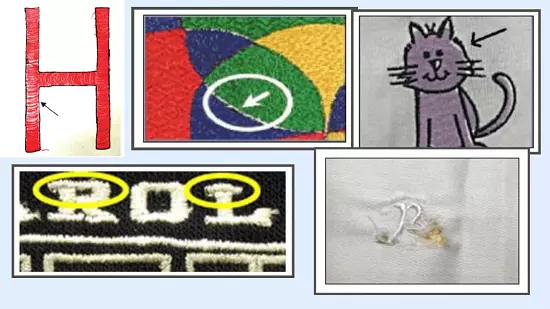Different Types of Embroidery process Defects produced in the Garments Industry
Embroidery is a very special and sensitive process done over clothing fabrics. To make the garments look more beautiful we do the embroidery on the product. But while doing the embroidery there happened some defects that hampered the quality. Timely detection and corrective action need to take otherwise the defects on the fabric spoil the appeal and quality of the final garments. Embroidery quality affects product quality, so we have to know the defects generated during this process. Here I present 12 Types of Embroidery Defects Found in the Garments Industry.
Irregularities either stitching or design or both may lead to the embroidery defect. Based on the defects we can take some preventive or corrective action to reduce the embroidery defects in the garment. One of the most frustrating aspects of embroidery work is encountering defects that mar the final product. In this article, we will explore various types of embroidery defects.
12 Different Embroidery Defects Found in the Garments Industry
- Fabric damage or needle holes
- Fabric gapping
- Missed trims
- Poor registration of design
- Bunching at the corners
- Thick embroidery/Coarse embroidery
- Poor stitch density
- Poor hooping
- Stich open
- Incomplete the process
- Uncut Thread
- Thread Breakage

Let’s discuss details of Embroidery Defects/faults/ Flaws during the process
Fabric damage or needle holes
Some time during sewing got some needle marks on the corner of the embroidery. That causes damage to the fabric.
Fabric gapping
Fabric gaping is also called fabric green. If the fabric is visible from the embroidery in the design or edge of the embroidery is called fabric gapping.
Missed trims
The appearance of extra embroidery threads left between patterns or other design elements in the embroidery.
Poor registration of design
If the stitches and design are not aligned properly then this type of problem happened.
Bunching at the corners
The jam stitch or gathering of more thread on one corner of the letter causes bunching of the corners.
Thick embroidery/Coarse embroidery
When the thickness of the embroidery becomes thicker than the required thickness of the embroidery is called coarse embroidery or Thick embroidery.
Poor stitch density
We can measure this by the number of stitches per inch or centimeter. Getting less is a big defect.
Poor hooping
After embroidery, the outer edge of the embroidery and the fabric crumpled and stops lying flat on a surface.
Incomplete the process
The whole process is not completed, the edge or half of the design stitching is missing. It happens for power cuts or sudden machine breakdowns generally.
Uncut Thread
After the embroidery sometimes we found some thread is not trimmed properly according to the design or pattern.
Thread Breakage
Thread breakage is a common issue where the embroidery thread snaps during the stitching process, leading to incomplete designs and wasted effort. This problem can arise due to several reasons:
Conclusion
These are Embroidery faults generated usually and we find them in the quality inspection. By understanding the causes behind common embroidery defects and implementing the suggested remedies, you can achieve flawless and visually stunning embroidery projects. Remember to pay attention to the quality of materials and tools used, follow proper techniques, and continually improve your embroidery skills to create remarkable and impressive works of art.
- You may love to read: How to Choose an Embroidery Machine
- 2 Major Types of Embroidery Machines & Benefits of Buying Wholesale
- Different Types of Embroidery Used in the Clothing Industry
